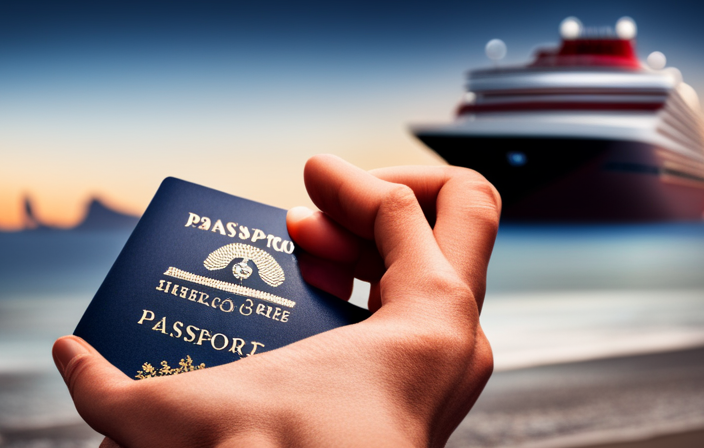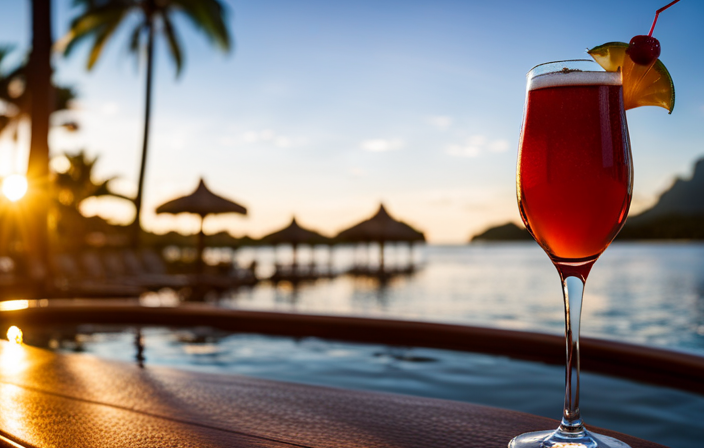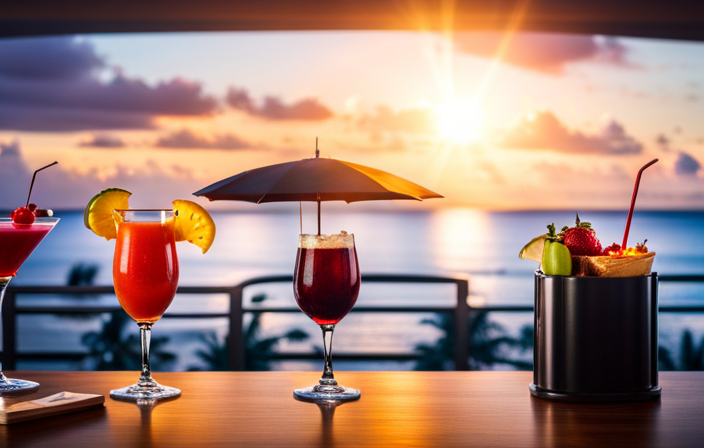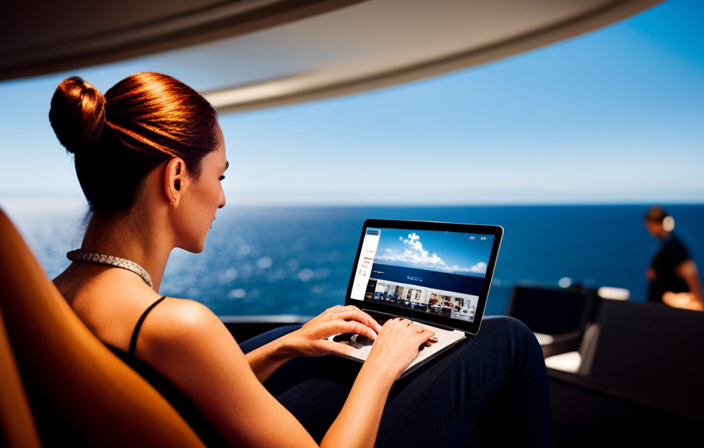Cruise News and Updates
The Hidden Toll of Holiday Indulgence: Health, Psychological, Financial, and Social Consequences

As the festive season approaches, it’s easy to get caught up in the joy and excitement of indulging in delicious treats and festive feasts.
However, it’s important to consider the hidden toll that holiday indulgence can have on our health, well-being, and finances.
From the increased risk of chronic diseases to the emotional burden of guilt and shame, the consequences of overeating and unhealthy behaviors during this time can be far-reaching.
In this article, I will explore the various health, psychological, financial, and social consequences of holiday indulgence, providing evidence-based insights and practical tips to help you navigate this festive season with your overall well-being intact.
So, let’s dive in and uncover the hidden dangers of holiday excess.
Key Takeaways
- Holiday indulgence can have significant physical health consequences, including an increased risk of obesity, heart disease, type 2 diabetes, and certain cancers.
- Psychological and emotional consequences of holiday indulgence can include decreased self-esteem, increased stress levels, higher risk of depression and anxiety, and negative impacts on mental well-being.
- Financial consequences of holiday indulgence can include higher grocery bills, potential medical expenses for weight-related health issues, overspending on gifts and decorations, increased financial stress, and difficulty in meeting financial goals.
- Social consequences of holiday indulgence can include pressure to indulge in decadent foods and drinks, negative impacts on body image, social isolation and withdrawal, strained relationships due to financial disagreements, and decreased quality time with loved ones.
The Impact on Physical Health
The indulgence in holiday treats and meals can lead to an increased risk of obesity, heart disease, type 2 diabetes, elevated blood pressure levels, and certain cancers.
It’s important to be aware of the physical consequences and obesity risks associated with indulging in excessive amounts of holiday food. Obesity is a serious health issue that can lead to a range of complications, including joint problems, sleep apnea, and an increased risk of heart disease and stroke.
Additionally, excess weight can contribute to the development of type 2 diabetes, as well as elevated blood pressure levels, which can further increase the risk of heart disease. Certain types of cancer, such as breast, colon, and pancreatic cancer, have also been linked to obesity.
It’s crucial to make mindful choices during the holiday season to protect our physical health and well-being.
The Burden on Mental Well-being
Excessive holiday eating takes a toll on my mental well-being by increasing my risk of depression and anxiety. The burden on mental well-being goes beyond just physical health. Here are some ways it impacts my self-esteem and emotional well-being:
-
Decreased self-esteem: Indulging in unhealthy eating habits during the holidays can lead to feelings of guilt and shame. This can negatively impact my self-esteem and make me feel bad about myself.
-
Emotional toll: Overeating during the holidays can disrupt my emotional balance. It can lead to mood swings, irritability, and increased stress levels, all of which can contribute to feelings of anxiety and depression.
Taking care of my mental well-being during the holidays is just as important as taking care of my physical health. By being mindful of my eating habits and finding healthier ways to celebrate, I can reduce the burden on my mental well-being and improve my overall quality of life.
The Financial Strain of Holiday Indulgence
Indulging in holiday treats and meals during this time of year can strain my finances. Not only do I have to consider the cost of overeating in terms of my health, but there are also significant financial consequences to my indulgence. The table below illustrates the various ways in which my wallet takes a hit during the holiday season:
| Financial Consequences of Holiday Indulgence |
|---|
| Higher grocery bills |
| Increased spending on holiday treats and meals |
| Potential medical expenses for weight-related health issues |
| Cost of gym memberships or weight loss programs |
| Potential loss of income due to health problems |
As the table shows, the cost of overeating goes beyond just the price of the food itself. It includes potential medical expenses, the cost of gym memberships or weight loss programs, and even the possibility of a loss of income due to health problems. It’s important to be mindful of not only the impact on our health but also the financial strain that holiday indulgence can bring.
Social Challenges and Stigma
Participating in holiday festivities can sometimes lead to social challenges and stigma. The pressure to indulge in decadent foods and drinks during this time can have a profound impact on our body image and social interactions.
People often feel judged or scrutinized for their food choices, which can lead to feelings of shame and guilt. These negative emotions can erode our self-esteem and contribute to the development of eating disorders.
Additionally, the holiday season can be a time of increased social isolation as individuals may withdraw from social activities due to concerns about their appearance or fear of judgment from others.
It is important to remember that our worth is not determined by our body size or the food we consume. Embracing body positivity and fostering inclusive environments can help alleviate the social challenges and stigma associated with holiday indulgence.
Long-Term Consequences of Holiday Overindulgence
I can’t ignore the potential long-term effects of overdoing it during the holidays. The importance of moderation and strategies for preventing overindulgence are crucial to maintaining our health and well-being.
Here are some practical ways to avoid the negative consequences of holiday excess:
- Set realistic goals for portion sizes and stick to them.
- Practice mindful eating by savoring each bite and listening to your body’s hunger cues.
- Stay active by incorporating physical activity into your holiday routine.
- Plan ahead and make healthier food choices when possible.
- Seek support from friends and family to keep you accountable.
Risks to Weight Management
Managing weight can be challenging, but it is important to be aware of the risks associated with overeating during the holidays.
The temptation to indulge in all the delicious treats can lead to weight gain and make it difficult to maintain weight control. Weight gain risks during the holidays include an increased risk of obesity, higher chances of developing heart disease, and greater likelihood of developing type 2 diabetes. Additionally, overeating can lead to elevated blood pressure levels and increase the risk of certain cancers.
To maintain weight control, it is crucial to practice portion control, choose healthier options, and stay physically active. By being mindful of our eating habits and making conscious choices, we can enjoy the holiday season without compromising our health and well-being.
The Toll on Overall Health
Excessive eating during the holidays can seriously impact my overall well-being, including my physical health. Not only does indulging in large quantities of food lead to weight gain and an increased risk of obesity, but it also has negative effects on my metabolism. Consuming excessive calories and overloading my body with sugar and fat can disrupt the normal functioning of my metabolism, making it harder for me to maintain a healthy weight and manage my energy levels.
That’s why it’s important to practice portion control and be mindful of what and how much I eat during this time of year. By being conscious of my food choices and limiting my portions, I can enjoy the holiday season without compromising my health.
The Hidden Dangers of Holiday Excess
Overeating during the holidays can have serious implications for my physical well-being. It can contribute to weight gain and an increased risk of various health issues. But it’s not just about the extra pounds on the scale. There are hidden health risks that come with indulging in holiday excess.
-
Emotional consequences: Overeating can lead to feelings of guilt, shame, and decreased self-esteem.
-
Increased risk of chronic health conditions: Holiday indulgence can elevate blood pressure levels, increase the risk of heart disease, type 2 diabetes, and certain cancers.
-
Negative impact on mental well-being: Excessive eating can contribute to higher rates of depression, anxiety, and even eating disorders.
-
Financial impact: The hidden costs of indulgence include higher grocery bills, potential medical expenses, and the cost of weight loss programs.
It’s important to be mindful of the hidden dangers of holiday excess. We should take steps to prioritize our health and well-being during this festive season.
Frequently Asked Questions
How Can Holiday Indulgence Impact My Risk of Developing Certain Cancers?
Holiday indulgence, such as excessive eating and drinking, can increase my risk of developing certain cancers. The high caloric intake, unhealthy food choices, and weight gain associated with holiday excess can contribute to the development of cancer.
What Are Some Strategies for Managing the Financial Burden of Holiday Indulgence?
To manage the financial burden of holiday indulgence, I can use budgeting strategies and saving tips. By planning ahead, setting a budget, and finding deals, I can enjoy the holidays without breaking the bank.
How Does Holiday Indulgence Affect My Ability to Participate in Physical Activities?
Holiday indulgence can seriously impact my ability to participate in physical activities. It can negatively affect my cardiovascular health and weaken my muscles, making it harder to stay active and maintain a healthy lifestyle.
What Are the Long-Term Consequences of Holiday Overindulgence on My Overall Quality of Life?
The long-term consequences of holiday overindulgence on my overall quality of life can include chronic health conditions, decreased psychological well-being, and a negative impact on my overall health.
Are There Any Hidden Dangers of Holiday Excess That Are Not Mentioned in the Article?
There are hidden dangers of holiday excess beyond health consequences. The toll on mental health is often overlooked, with increased stress, anxiety, and depression. It’s important to prioritize self-care during this time.
Claire, a creative soul with an unquenchable thirst for storytelling, is an integral part of the Voyager Info team. As a dedicated writer, she weaves captivating narratives that transport readers to enchanting cruise destinations and beyond.
Claire’s love affair with writing began at an early age when she discovered the magic of words and their ability to craft worlds and emotions. Her innate curiosity led her to explore various literary genres, but it was travel writing that truly captured her heart. Drawing inspiration from her own globetrotting adventures and encounters with diverse cultures, Claire embarked on a journey to become a travel writer par excellence.
Cruise News and Updates
Safely Experience And Support The Future Of Cruises In 2021

Howdy! While we make our way through the unpredictable challenges brought on by the global health crisis, the cruise industry is undoubtedly one of the hardest hit sectors. However, do not despair, fellow journey-seekers, as it appears that there is a glimmer of hope on the horizon!
In this article, we will delve into the exciting world of cruises in 2021 and explore how we can safely experience and support their future.
Like a sturdy anchor, the Centers for Disease Control and Prevention (CDC) has laid out requirements for test cruise volunteers, ensuring that we set sail with utmost caution. These requirements include being 18 years or older, fully vaccinated against COVID-19 or having no high-risk medical conditions, and agreeing to COVID-19 testing. These test cruises serve as a simulation, allowing cruise lines to fine-tune their operations and ensure the safety of both crew and passengers.
So, grab your life jackets and join me as we embark on a journey to discover the ins and outs of these test cruises. From embarkation to dining, entertainment to medical evacuation procedures, we will explore it all.
Let’s set sail and support the future of cruises in 2021!
Key Takeaways
- CDC requirements for test cruise volunteers include being 18 years or older, fully vaccinated against COVID-19 or having no high-risk medical conditions, and undergoing COVID-19 symptom evaluations before embarkation and disembarkation.
- The purpose of test cruises is to ensure safe operation during the global health crisis and simulate the passenger experience.
- Test cruises must be at least 2-7 days in duration with at least one overnight stay, and the CDC recommends a minimum voyage length of 3 days with 2 overnight stays.
- Simulated activities on test cruises include embarkation and disembarkation procedures, dining, entertainment, and medical evacuation procedures, isolation and quarantine measures, and protocols for recreational activities and shore excursions.
What is it?
I’ll explain what a test cruise is in 2021. A test cruise is a simulated voyage that cruise lines conduct to ensure safe operation despite the global health crisis. These cruises serve to test and evaluate the implementation of safety measures and protocols.
The purpose is to simulate the passenger experience and identify any areas that may need improvement. Test cruises typically last between 2-7 days, with at least one overnight stay. Safety is of utmost importance, and all volunteers must adhere to CDC requirements, such as being fully vaccinated against COVID-19 and undergoing pre and post-disembarkation COVID-19 testing.
While test cruises are not paid and cannot be part of employment conditions, volunteers have the opportunity to support the future of the cruise industry and contribute to the development of enhanced safety protocols.
Requirements for Volunteers
To volunteer for a test cruise in 2021, I must meet the CDC requirements, including being fully vaccinated against COVID-19 or having no high-risk medical conditions, and I must be willing to undergo COVID-19 testing before and after the cruise.
The evaluation process for volunteers will involve assessing their vaccination status and checking for any COVID-19 symptoms before embarkation and disembarkation.
The purpose of this evaluation is to ensure the safety of all participants and to simulate a real passenger experience. It is crucial for volunteers to comply with these requirements in order to support the future of cruises in 2021 and to help the industry operate safely amidst the global health crisis.
By following these guidelines, we can contribute to the development of effective protocols and measures that will allow cruise ships to resume operations in a responsible manner.
Test Cruise Details
The test cruises will have a duration of 2-7 days and will include at least one overnight stay. These cruises are designed to simulate the passenger experience and ensure safe operation despite the ongoing global health crisis. During the test cruises, various activities will be simulated, including embarkation and disembarkation procedures, dining, entertainment, and medical evacuation protocols.
Additionally, there will be simulated recreational activities such as casinos and spa services, as well as protocols for private-island and port of call shore excursions.
As for the sign-up process and selection for test cruises, currently, only Royal Caribbean has provided a sign-up form for volunteers. In the first week, they received 100,000 signatures. However, there haven’t been any announcements or updates regarding sign-up methods from Norwegian, Carnival, MSC, and Disney. The volunteer selection process for test cruises hasn’t been disclosed at this time.
Frequently Asked Questions
Can I bring my own food and beverages on a test cruise?
On a test cruise, passengers are not allowed to bring their own food and beverages. The cruise line provides all meals and drinks as part of the simulated passenger experience. Dietary restrictions can be accommodated upon request.
Will test cruise volunteers have access to all onboard amenities and services?
Test cruise volunteers are expected to have access to all onboard amenities and services. However, it is important to note that volunteers are not compensated for their participation in the test cruises.
Are there any restrictions on the number of passengers allowed on a test cruise?
Passenger capacity limits for test cruises are determined by the CDC. However, cruise lines that require vaccinations for passengers can bypass test cruises. Vaccination requirements are in place to ensure the safety of all participants.
How often will test cruises be conducted in 2021?
Test cruises will be conducted multiple times in 2021 as part of the cruise industry recovery and to ensure health and safety measures. The exact frequency of test cruises has not been specified.
Will test cruise volunteers be compensated in any way for their participation?
Test cruise volunteers will not be compensated for their participation. However, they will benefit from the opportunity to experience a simulated cruise, contribute to the safe operation of cruises, and help shape the future of the industry.
Claire, a creative soul with an unquenchable thirst for storytelling, is an integral part of the Voyager Info team. As a dedicated writer, she weaves captivating narratives that transport readers to enchanting cruise destinations and beyond.
Claire’s love affair with writing began at an early age when she discovered the magic of words and their ability to craft worlds and emotions. Her innate curiosity led her to explore various literary genres, but it was travel writing that truly captured her heart. Drawing inspiration from her own globetrotting adventures and encounters with diverse cultures, Claire embarked on a journey to become a travel writer par excellence.
Cruise News and Updates
How Cruise Ships Operate: Profits, Strategies, And Continuous Operation
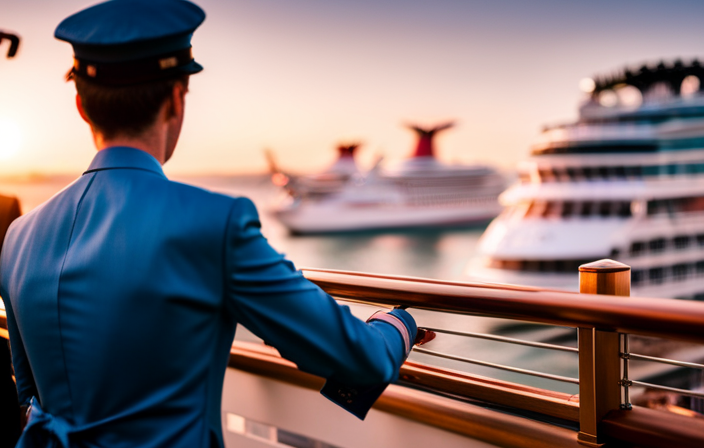
Hello! We are excited to invite you to explore the captivating world of cruise ships and learn about how they operate.
Picture this: cruise ships, those floating paradises on the sea, are not only about providing unforgettable vacations but also about generating impressive profits. In this article, we’ll explore the strategies and continuous operation that keep these magnificent vessels afloat financially.
Did you know that ticket prices for mainstream cruise lines average around $1,293? But that’s just the beginning. Additional onboard spending can add up to a whopping $429 per passenger. From casinos to spas, shopping to dining, and everything in between, cruise lines have cleverly designed their ships to maximize revenue from various sources.
But it doesn’t stop there. We’ll also uncover the secrets behind the ownership and categorization of cruise lines. From Carnival Corporation to Royal Caribbean Group and Norwegian Cruise Line Holdings, these three corporations dominate the industry with their multiple brands.
So, fasten your seatbelts (or life jackets) and get ready to embark on a journey through the intriguing world of cruise ship operations.
Let’s set sail!
Key Takeaways
- Cruise ship ticket prices include both the base fare and additional onboard spending, such as casinos, spas, shopping, dining, Wi-Fi, and drinks.
- Main sources of profit for cruise lines are casinos, spas, shopping, dining, Wi-Fi, and drinks.
- Placement of common areas like lounges, bars, and casinos strategically along passenger routes helps generate more revenue.
- Cruise lines employ various profit-making strategies, such as making most of the money upfront for premium cruise lines and catering to passengers who spend more time in ports for luxury cruise lines.
How They Make Money
I make money by offering various sources of entertainment and amenities on board, such as casinos, spas, shopping, dining, Wi-Fi, and drinks. These are the key sources of profit for cruise lines. Onboard revenue sources are crucial in generating income for the company.
Passengers spend money on these amenities and entertainment options, contributing to the overall profitability of the cruise line. Additionally, we generate revenue through passenger spending on private islands. By leasing private islands from foreign countries, we provide passengers with unique experiences, such as complimentary beach chairs and BBQ lunches. This not only enhances their vacation but also increases their spending on the island.
These onboard revenue sources and passenger spending on private islands play a significant role in ensuring the financial success of the cruise line.
Continuous Operation Process
Year-round, cruise liners tirelessly navigate the seas, seamlessly switching regions during repositioning cruises, and swiftly preparing for the next voyage on turnaround day. Crew management plays a crucial role in ensuring continuous operation. Cruise lines hire crew members from foreign countries, allowing them to save costs while maintaining a diverse and efficient workforce. These crew members work tirelessly to provide exceptional service to passengers, ensuring their comfort and satisfaction throughout the voyage.
Repositioning cruises are another aspect of continuous operation. These cruises occur when ships move from one region to another, often during seasonal changes. During repositioning cruises, cruise lines take the opportunity to offer unique itineraries and experiences to passengers. This allows them to generate additional income while optimizing the usage of their fleet.
Incorporating a 3 column and 5 row table:
| Continuous Operation Process | |
|---|---|
| Year-round operation | Without breaks |
| Repositioning cruises | Ships switch regions |
| Turnaround day | Quick disembarkation and preparation for the next cruise |
| Crew management | Hiring crew members from foreign countries |
| Additional income | Visiting multiple ports |
Ownership and Categorization
Carnival Corporation, Royal Caribbean Group, and Norwegian Cruise Line Holdings are the three corporations that own multiple cruise line brands. These corporations have a complex ownership structure, with each owning several cruise lines that cater to different market segments.
Carnival Corporation, for example, owns popular mainstream brands such as Carnival Cruise Line and Princess Cruises, while Royal Caribbean Group owns premium brands like Royal Caribbean International and Celebrity Cruises. Norwegian Cruise Line Holdings, on the other hand, owns Norwegian Cruise Line, which falls into the mainstream category.
Differentiation factors play a crucial role in the ownership structure. Each corporation strategically positions its cruise line brands to cater to different types of passengers. This allows them to capture a wider market share and maximize profits.
From mainstream to luxury, these corporations have created a diverse range of cruise lines that offer unique experiences and amenities. By offering different levels of service, accommodations, and onboard activities, they are able to attract and retain passengers with varying preferences and budgets.
The ownership and categorization of cruise line brands play a significant role in the overall profitability and success of these corporations.
Frequently Asked Questions
How do cruise ships handle medical emergencies and provide medical care to passengers on board?
Cruise ship medical facilities are equipped to handle medical emergencies. The crew receives emergency response training, and medical personnel are available on board. Passengers can receive medical care and treatments while at sea.
What safety measures are in place to prevent accidents or incidents on cruise ships?
Cruise ship safety measures include thorough training for crew members, regular safety drills, strict adherence to international safety regulations, advanced navigation systems, surveillance cameras, and emergency response protocols to prevent accidents and incidents onboard.
How do cruise ships handle waste management and environmental sustainability?
Ah, waste management and environmental sustainability, the unsung heroes of cruising. Cruise ships tackle these challenges through advanced waste treatment systems, recycling programs, and energy-efficient technologies, ensuring a greener voyage for all.
What is the process for hiring and training crew members on cruise ships?
The hiring process for crew members on cruise ships involves recruiting from foreign countries, conducting interviews and background checks, and providing training in various areas such as safety, customer service, and emergency procedures.
How do cruise ships handle security and ensure the safety of passengers and their belongings?
Cruise ship security is a top priority, ensuring passenger safety and protecting their belongings. Vigilant surveillance systems, trained security staff, and strict access control measures are implemented to prevent incidents and swiftly respond to emergencies.
Claire, a creative soul with an unquenchable thirst for storytelling, is an integral part of the Voyager Info team. As a dedicated writer, she weaves captivating narratives that transport readers to enchanting cruise destinations and beyond.
Claire’s love affair with writing began at an early age when she discovered the magic of words and their ability to craft worlds and emotions. Her innate curiosity led her to explore various literary genres, but it was travel writing that truly captured her heart. Drawing inspiration from her own globetrotting adventures and encounters with diverse cultures, Claire embarked on a journey to become a travel writer par excellence.
Cruise News and Updates
The Fascinating World Of Cruise Ships: Size, Power, And Environmental Impact
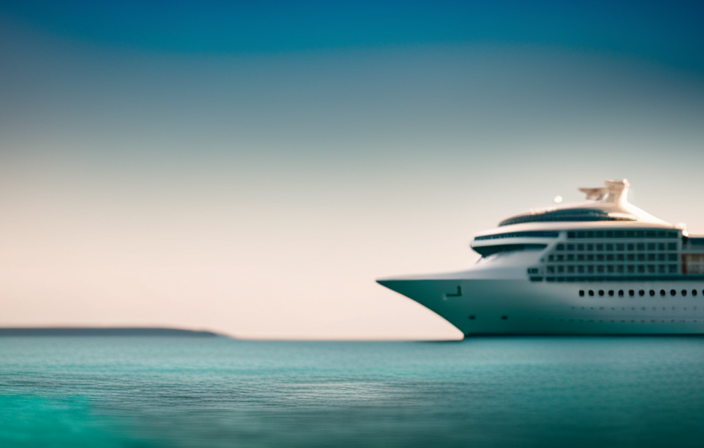
Oh, the world of cruise ships. It’s a mesmerizing realm, filled with magnificent vessels sailing the vast oceans, taking passengers to distant, enchanting locations.
The sheer size and power of these floating marvels never fail to astound me. From their towering lengths, ranging from 900 to 1,100 feet, to their impressive fuel tanks, holding a staggering 1 to 2 million gallons of fuel, cruise ships are a testament to human engineering. Some even harness the energy of liquefied natural gas, with engines so colossal they could fill a room. It’s truly awe-inspiring.
Yet, amidst this marvel, we must also consider the environmental impact. Many cruise lines still rely on diesel-powered engines, but the use of LNG reduces carbon emissions by a significant 30%.
As a passionate traveler and writer, I am eager to delve into the fascinating world of cruise ships, exploring their size, power, and environmental impact. Join me as we embark on this journey of discovery and exploration.
Key Takeaways
- Cruise ships are massive vessels that can range in length from 900 to 1,100 feet.
- Some cruise ships use liquefied natural gas (LNG) as fuel, reducing carbon emissions by 30%.
- The environmental impact of cruise ships, particularly diesel-powered engines, is a concern and contributes to air pollution and climate change.
- The adoption of sustainable cruise practices, including the use of LNG fuel, is crucial for a more sustainable future and to mitigate the environmental impact of cruise ships.
Cruise Ship Specifications
Cruise ship specifications are an important aspect to consider when understanding their size, power, and environmental impact. These massive vessels can range in length from 900 to 1,100 feet, accommodating thousands of passengers and crew members.
Fuel consumption is a significant consideration, with cruise ships typically carrying 1-2 million gallons of fuel in their tanks. Some ships are now incorporating LNG tanks, which reduce carbon emissions by 30%.
The shipbuilding process is a complex endeavor, with engines playing a crucial role in powering these floating cities. Cruise ships are equipped with 4-6 engines, each generating an impressive 18.5 megawatts of power. These engines, measuring up to 45 feet in length and 27 feet in height, propel the ship at an average speed of 18-22 knots.
Additionally, cruise ships are equipped with two anchors weighing 10-20 tons each, ensuring stability while at port.
Engine and Power Details
When it comes to engine and power details, it’s important to consider the environmental impact and the need for alternative fuel sources.
Cruise ship propulsion plays a crucial role in determining the ship’s fuel efficiency and carbon emissions. Most cruise ships are equipped with 4-6 engines, each generating 18.5 megawatts of power. These engines can measure up to 45 feet in length and 27 feet in height.
While many cruise lines still rely on diesel-powered engines, there is a growing shift towards using liquefied natural gas (LNG) as a more environmentally friendly fuel source. LNG-powered ships can reduce carbon emissions by up to 30%.
As the cruise industry continues to evolve, it’s crucial for shipbuilders and operators to prioritize fuel efficiency and explore sustainable propulsion options to minimize their environmental impact.
Environmental Impact
As an enthusiast of the cruise industry, I am deeply concerned about the ecological consequences of traditional diesel-powered engines commonly used on cruise ships. Cruise ship emissions have a significant impact on the environment, contributing to air pollution and climate change. However, there are sustainable cruise practices being implemented to address these concerns. One such practice is the use of LNG-powered fuel, which reduces carbon emissions by 30% compared to diesel. This is a positive step towards minimizing the environmental impact of cruise ships.
To visualize this information, here is a table highlighting the environmental impact of cruise ship emissions:
| Environmental Impact | Consequences |
|---|---|
| Air pollution | Increased respiratory |
| problems | |
| Climate change | Rising sea levels |
| and extreme weather |
By adopting sustainable cruise practices and transitioning to cleaner fuel sources like LNG, cruise ships can help mitigate their environmental footprint and contribute to a more sustainable future.
Frequently Asked Questions
What are some popular destinations for cruise ships?
Top rated cruise ship destinations include the Caribbean, Mediterranean, Alaska, and the Baltic Sea. These locations offer stunning scenery, cultural experiences, and a variety of activities. The cruise industry is adopting eco-friendly practices to reduce its environmental impact.
How many passengers can a typical cruise ship accommodate?
A typical cruise ship can accommodate thousands of passengers, resembling a floating city. With various cruise ship designs catering to different market segments, the cruise ship market continues to evolve to meet the needs of travelers worldwide.
What are some unique amenities or features found on modern cruise ships?
Luxury accommodations and innovative dining experiences are some unique amenities found on modern cruise ships. Passengers can enjoy spacious suites, private balconies, gourmet restaurants, and specialty dining options that cater to various tastes and dietary preferences.
How do cruise ship companies ensure the safety and security of their passengers?
Cruise ship companies ensure the safety and security of their passengers through various measures. They have well-equipped medical facilities onboard and conduct regular emergency drills to prepare passengers for any potential emergencies that may arise during their voyage.
What are some common activities or entertainment options available on cruise ships?
Cruise ships offer a wide range of activities and entertainment options. From gourmet dining experiences to luxurious onboard spa and wellness facilities, passengers can indulge in relaxation and enjoy a variety of amenities during their cruise vacation.
Claire, a creative soul with an unquenchable thirst for storytelling, is an integral part of the Voyager Info team. As a dedicated writer, she weaves captivating narratives that transport readers to enchanting cruise destinations and beyond.
Claire’s love affair with writing began at an early age when she discovered the magic of words and their ability to craft worlds and emotions. Her innate curiosity led her to explore various literary genres, but it was travel writing that truly captured her heart. Drawing inspiration from her own globetrotting adventures and encounters with diverse cultures, Claire embarked on a journey to become a travel writer par excellence.
-

 Cruise FAQs3 days ago
Cruise FAQs3 days agoHow To Turn On Cruise Control Tesla Model 3
-

 Cruise FAQs3 months ago
Cruise FAQs3 months agoWhat Is The Weather Like On A Transatlantic Cruise In April
-

 Cruise FAQs3 days ago
Cruise FAQs3 days agoHow To Set Cruise Control Tesla Model Y
-

 Cruise FAQs3 months ago
Cruise FAQs3 months agoHow to Contact Someone on a Carnival Cruise Ship
-
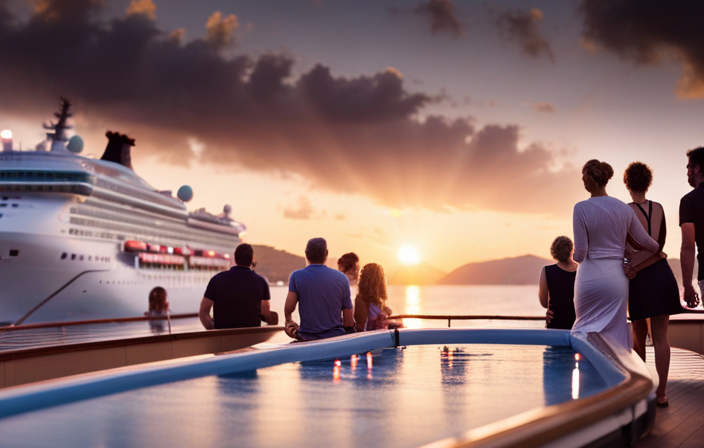
 Cruise Lines3 months ago
Cruise Lines3 months agoWhat Is The Average Age Of Passengers By Cruise Line
-

 Onboard Experience1 week ago
Onboard Experience1 week agoFinding Deals On Unsold Cruise Cabins: Tips And Strategies
-
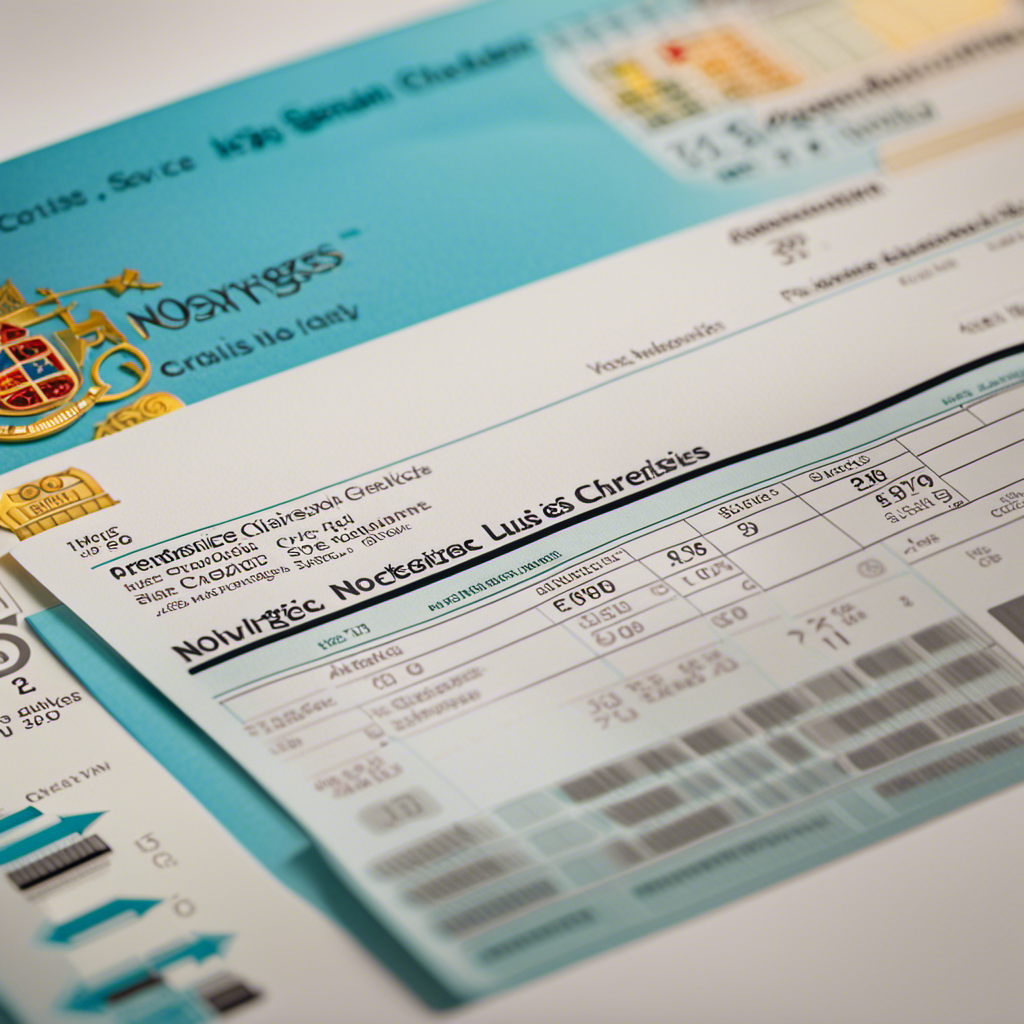
 Cruise Lines3 months ago
Cruise Lines3 months agoDecoding Norwegian Cruise Line’s Gratuities and Service Charges
-
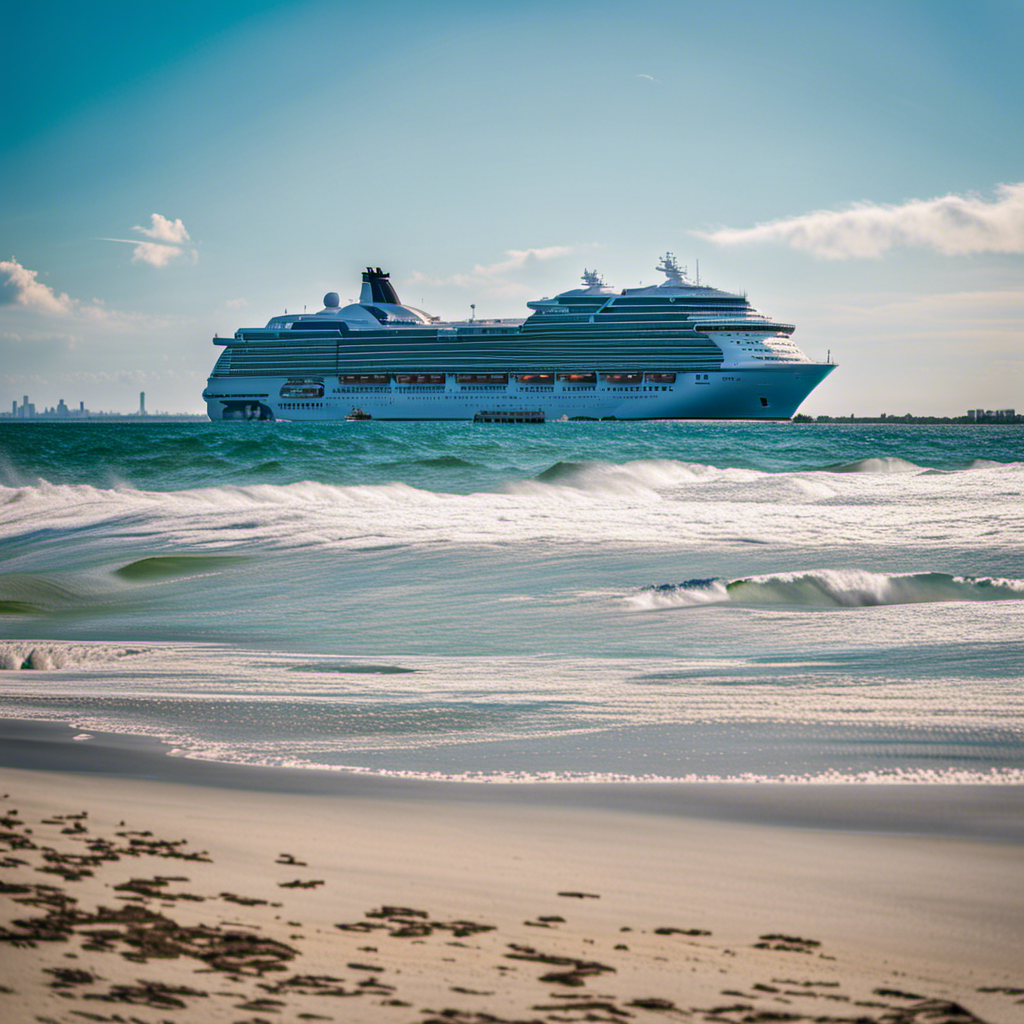
 Cruise Lines3 months ago
Cruise Lines3 months agoWhat Cruise Lines Depart From North Carolina







